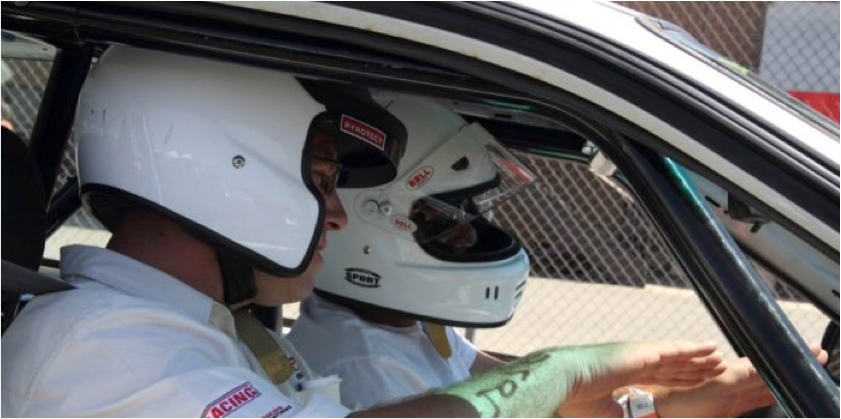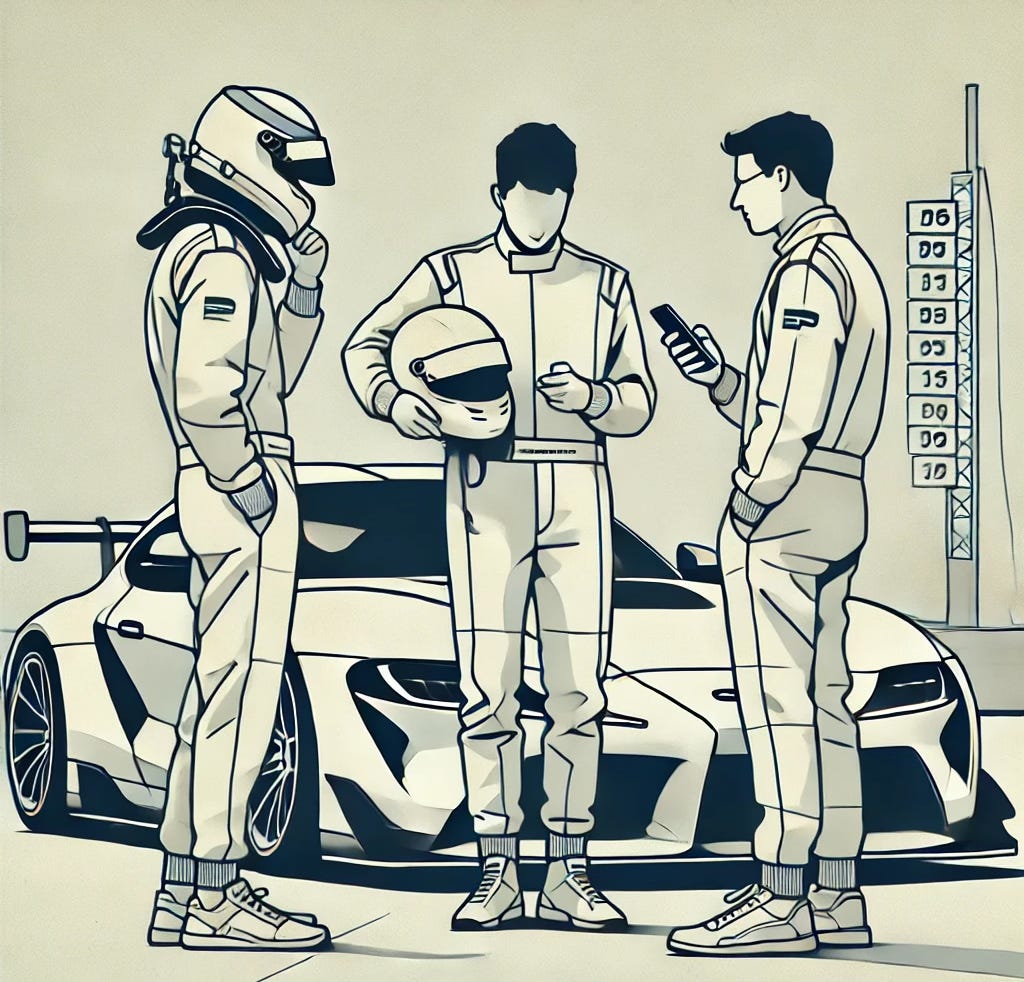I’ve talked to countless number of driving event organizers about the younger generation’s lack of interest in performance driving. Based on what many have told me, it seems that the younger generation is to “blame.” I’ve heard many comments about how younger people aren’t interested in driving, they’d rather spend time online, they can’t afford the cost of driving, mass transit is more available now, and on and on. In other words, most of the feedback I’ve heard has focused on “them,” with very little on “us.”
While there is some effort being put into adapting to the needs of younger people, it’s not enough. One of my favorite sayings is, “There are problem identifiers, and problem solvers. Which one do you want to be?” While I’ve spent much time thinking about this issue, most of it has focused on solutions (I’m not saying, however, that I have all the solutions!).
If you play any electronic game — Candy Crush, World of Warcraft, Pokémon, Forza — you know they have multiple levels. That’s what makes them so addictive. Imagine if Pokémon or World of Warcraft had only three or four levels — how many games would sell? Yep, about three or four! But they have hundreds of ways to measure your success, hundreds of sources of near-immediate feedback. And they sell millions of games.
What if we did something similar with HPDE and track events? What if we gamified our sport?

Most organizations running track events, whether educational or not, have four groups (give or take a couple). If you’re just starting out, you’re in the novice group (“A,” “D,” “Green,” or whatever). As you progress with your skill development and experience acquisition, you move through intermediate to advanced, and often to the instructor ranks (because if you’re a fast driver, you must be a good instructor, right? Not! But that’s a topic for another day!).
If you’re like the typical HPDE or track day driver in this country, you’re one of tens of thousands. And you likely do between four and ten days at the track each year (some less, some more). To move from one level to another may take months; some drivers take a year or more. If it took months to level up in Pokémon Go, would we see as many people, young and old, walking while staring at their phones? Absolutely not. In fact, Pokémon Go, and any other game like it, would likely go out of business. Instead, they have hundreds of levels and sub-levels. And that’s critical to their “stickiness,” and their appeal to a wide range of people.
Car club driving events may go out of business in the near future if we don’t adapt them to a younger audience, as another common thing I see at events is a lot of grey hair. It’s up to us to adapt to them, rather than blaming them. The event organizers who come up with a new, game-like approach may just end up “owning” our sport.
It’s said that Baby Boomers need about one piece of feedback each year, while Millennials need feedback every five minutes or so. Workplace managers are either being trained to give young workers more feedback (both confirming and corrective) or they are younger themselves and are already doing that. Growing up with constant, immediate feedback through games has changed what Millennials expect — and what motivates them.
What would happen if a Millennial came to the track for an HPDE event, nervously sat through a 45-minute classroom session (when all they wanted to do was drive), finally got on track, and then were told that before they could drive on their own (solo, without an instructor telling them what to do, rather than exploring on their own, like in games) they would need to get to the Intermediate Solo level? And that might take months! And we wonder why more young people are not clamoring to do more track driving events.

Games are crazy simple to get started with. You don’t have to belong to a club (not officially, anyway — ultimately, the gaming community is club-like); you don’t have to sit through a classroom session before beginning to play; you can explore on your own; there is little to no fear of failure (as opposed to so many classroom sessions and instructors filling students’ heads with warnings of what not to do, death, and dismemberment!); and the cost is low (that’s one thing that will be next-to-impossible to change in our sport).
A consistent, standardized form of feedback is one metric for leveling up, but since there are so many different opinions about what that should look like, it’s difficult to compare from one club or organization to another (DrivingEvals.com is an example, though). And since most feedback is given by volunteer instructors who instruct fewer than ten times per year (what do you do ten times per year that you improve at?), it’s difficult for that feedback to be consistent — which is at the core of what a metric for leveling up should be based on. Currently, most leveling up is based on a very subjective opinion from an instructor who may even want to move the driver up so they no longer have to ride in the right seat with them.
Of course, lap times are an objective and consistent metric. Well, mostly consistent — track conditions affect them, but that’s a relatively small variable. Some clubs still don’t allow lap timing, as they feel it has an impact on liability and insurance risks. That’s probably outdated thinking; I don’t think there’s a regular insurance policy available that covers cars on track anymore (even if it’s a “driver education” event with no lap timing; most insurance companies have eliminated any coverage for anything that happens on a race track).
Maybe, instead of downplaying lap times, that’s a metric we should be using to level up? I’m usually the first to minimize focusing on lap times, as they distract a driver from focusing on the one thing they can control — their own performance. So, having lap times show in the moment, in the car, while the driving is happening is not the solution. But including them as a form of feedback after the fact, after the on-track session — that can be used effectively.
But think about an objective, consistent way of measuring smoothness and consistency….
What if a novice driver:
- Received subjective feedback from their instructor in an electronic, consistent, standardized method immediately after every on-track session — perhaps six categories, all rated on a 1 to 7 scale, with the driver’s fastest lap time for the session is factored in
- The driver’s average lap time (providing a glimpse into consistency) for the session is factored
- The gap between fastest and average lap times are factored in
- A “smoothness rating,” based on g-forces, steering angle, and a couple of other factors, is also included
- Bonus points are awarded for completing pre-work, such as an online course, including an assessment.
With this alone, the driver receives at least ten (more with the bonus assessment) recorded metrics — after each and every on-track session. Using a simple algorithm, these can be coded so that it results in one rating, leading to leveling up (or even down!).
We also need to remove as many barriers to entry as possible, while we gamify what we provide. Barriers like the challenge of finding a track event, the perception that it’s only for owners of so-and-so cars, making a classroom session that is far from an ideal learning environment, and perhaps the initial high cost (should a newbie’s first course be subsidized, perhaps?).
If we remove barriers and gamify our sport, rather than searching for Pikachu or leveling up in Candy Crush, people will come to the track and level up their driving. No matter what their age.
I’m simply throwing some ideas out here to see if it generates some creative approaches to what the future of our sport could look like.
Thoughts?
